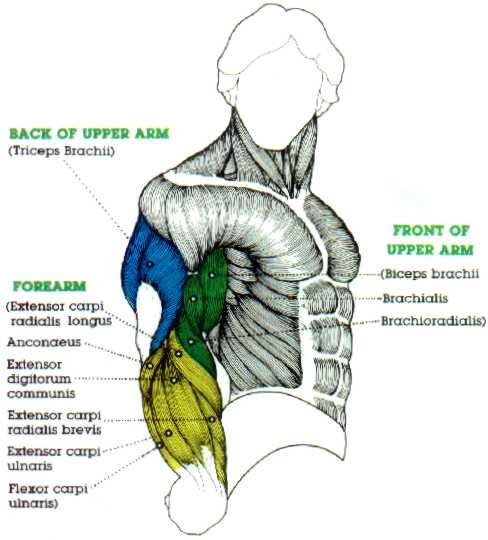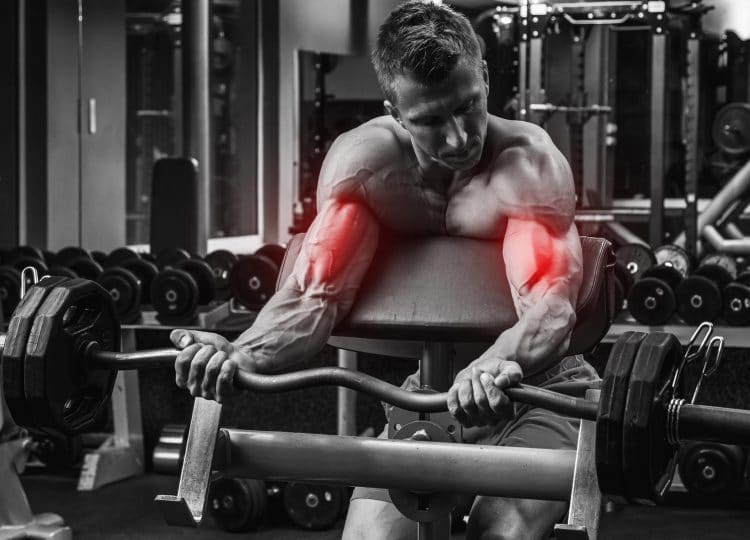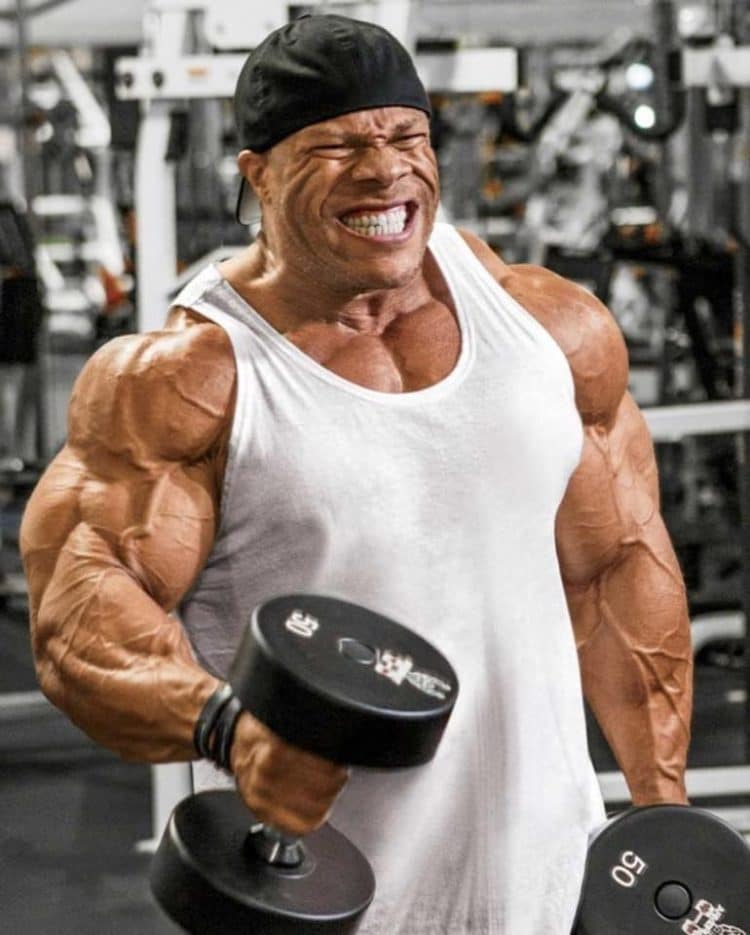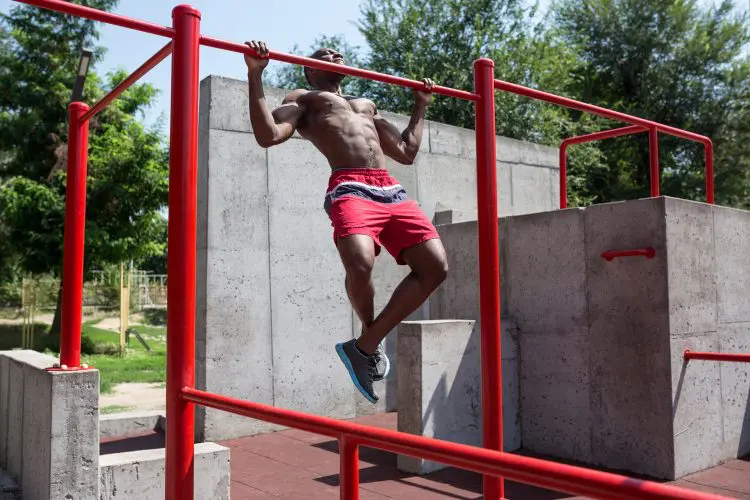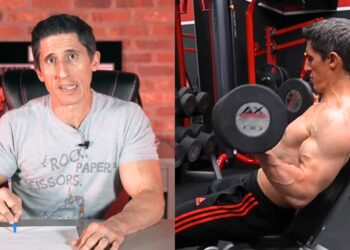Look at most training programs, and you’ll see things like three sets of eight (3 x 8) four sets of ten (4 x 10), or five sets of five (5 x 5). Unless you are told otherwise, these are straight sets. That means all the sets are done using the same weight and roughly the same rest period.
While straight sets are effective, some people like to shake things up with what bodybuilders call training systems. A training system is a method that increases workout intensity. Training systems are used to bust through training plateaus and generally make a workout more challenging and potentially more productive.
One very popular system is called 21s, also known as the Matrix system.
It’s generally accepted that 21s was first invented by Dr. Ronald Laura back in the early 1980s. However, some people attribute this method to English bodybuilder Wag Bennett, an early mentor of Arnold Schwarzenegger in the mid-1960s, and Bennet may have learned it from The Iron Guru, Vince Gironda.

Ultimately, it doesn’t matter WHO invented 21s; they work and are a worthy addition to most bodybuilding workouts.
While you can use 21s with many exercises, in this article, we’re going to discuss the most popular way to apply this training method – biceps 21s.
Level Up Your Fitness: Join our 💪 strong community in Fitness Volt Newsletter. Get daily inspiration, expert-backed workouts, nutrition tips, the latest in strength sports, and the support you need to reach your goals. Subscribe for free!
Biceps 21s increase time under tension and metabolic stress and produce a great pump, all of which will hopefully trigger new arm growth.
Biceps 21s Anatomy
As you undoubtedly have guessed, biceps 21s train your biceps! However, there is a little more to this exercise. Let’s take a quick peek at the anatomy of biceps 21s.
Biceps brachii – usually just called your biceps, this is the muscle on the front of your upper arm and the agonist or prime mover of biceps 21s. The biceps is a two-headed muscle with three functions: elbow flexion, forearm supination, and shoulder flexion.
Brachialis – located beneath the biceps, the brachialis is only partly visible, but that doesn’t mean it’s not a crucial arm muscle. The brachialis is actually stronger than the biceps by about 50%, so it plays a significant role in all elbow flexion movements. Also, a well-develop brachialis helps “prop up” the biceps, making it look bigger.
Forearms – whether you do barbell, dumbbell, or cable Biceps 21s, your lower arms are going to get a good workout. After all, you’ll need to keep a firm grip on the weights so you can work your arms to the max. You can increase forearm activation by using a thick-handled bar or a thumbless grip.
How to Do Biceps 21s
Biceps 21s involve breaking your rep down into three ranges of motion. You do seven reps in each range, totaling 21 reps, which is what gives this training method its name. The three ranges of motion are:
- Outer range – 7 reps
- Inner range – 7 reps
- Full range – 7 reps
You can do this exercise with a straight barbell, EZ bar, dumbbell, or cable machine. Here’s an explanation for EZ bar biceps 21s.
- Hold an EZ bar with an underhand, shoulder-width grip. Stand with your feet about shoulder-width apart, abs braced, and arms straight. Pull your shoulders down and back.
- Bend your arms and curl the weight up until your elbows are bent to 90-degrees, and your forearms are roughly parallel to the floor. Lower the bar and repeat to do seven reps.
- Next, from 90-degrees, curl the weight up to your shoulders and lower it down until your forearms are parallel to the floor. Again, do seven reps.
- Finally, lower the bar all the way down and then do seven more reps, from full extension to flexion.
Biceps 21s Performance Tips

Get the most from this exercise with the following hints and tips:
- Avoid momentum – raise and lower the weights with control to keep maximum tension on the target muscles. The range of motion in the first two phases is small, and swinging the weights up could mean you end up with very little stress on your biceps.
- Use light to moderate weights – leading on from above, if you go too heavy, you’ll probably end up swinging the weights up. Use light to moderate weights and focus on squeezing your muscles rather than jerking the weight up.
- Don’t rush the last seven reps – watch a lot of people do 21s, and you’ll see them rushing to finish the last seven reps. This is probably due to the intense burning they can feel in their biceps! Lift and lower the weight slowly to maximize muscle tension and metabolic stress. Speeding up makes this system less effective.
- Don’t just do barbell biceps 21s – most people do barbell biceps 21s. And why not; it’s a GREAT exercise! However, your body responds best when it’s exposed to a variety of different exercises, so make sure you also use dumbbells, cables, EZ bars, and the variations outlined below to keep your workouts novel and productive. Even biceps 21s will lose some of their potency if you use the same exercise over and over.
- Try other reps ranges – while biceps 21s are traditionally done using seven reps per range of motion, there is nothing to stop you from doing less or more reps, depending on your strength and how much weight you are using. For example, you could do five reps in each phase of the exercise, or ten. Experiment to see what works best for you.
Biceps 21s Variations and Alternatives
As well as using an EZ bar, barbell, dumbbells, or a cable machine, there are a few other ways you can train your biceps with 21s. Use these variations and alternatives to maintain workout productivity and ward off boredom.
1. Preacher Biceps 21s
Level Up Your Fitness: Join our 💪 strong community in Fitness Volt Newsletter. Get daily inspiration, expert-backed workouts, nutrition tips, the latest in strength sports, and the support you need to reach your goals. Subscribe for free!
Preacher curls were a favorite exercise of the first-ever Mr. Olympia Larry Scott, who was famed for his amazing biceps. Preacher curls were such a big part of Scott’s training that they are sometimes called Scott curls.
Add a new dimension to preacher curls by combining them with 21s. As before, start with your arms straight and do seven outer range reps. Next, do seven inner range reps. Finish off your biceps with seven complete reps. You can do preacher curls using a barbell, EZ bar, dumbbells, or a cable machine.
Learn more about preacher curls here.
2. Reverse Barbell Curl 21s
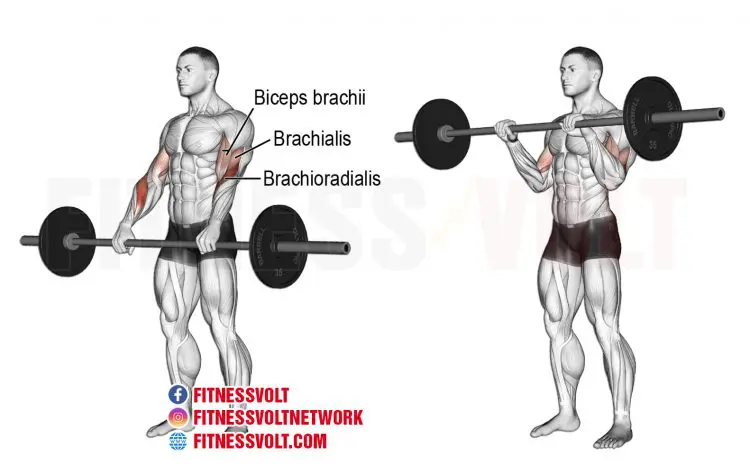
If you want to build your upper and lower arms simultaneously, reverse barbell curls are one way to do it. Using a pronated or palms down grip means you have to work harder to keep your wrists straight, which increases forearm activation. Doing this exercise 21s-style makes it even more demanding and effective.
Find out more about barbell reverse curls here.
3. Hammer Curl 21s
Hammer curls emphasize your brachialis muscle. They’re so-called because, using a neutral, thumbs-up grip, you look like you are hammering nails. While doing 21s with this exercise is a little unusual, it’s an effective way to make it even more effective. You can do dumbbell hammer curls or on a cable machine fitted with a rope handle.
Read also: Bicep Curl vs. Hammer Curl
4. Dumbbell Concentration Curl 21s
Dumbbell concentration curls are a good way to finish your biceps workout. Using your leg to immobilize your upper arm, it’s tough to cheat when doing this exercise. It also produces a nice pump effect. Why not work your biceps even harder by doing this exercise 21s-style?
Learn more about concentration curls here.
5. Chin-up 21s
No weights? No problem! You can work your biceps using nothing more than your body weight for resistance and, as an added benefit, build your lats too. Needless to say, this is a CHALLENGING exercise, so you may need to do fewer reps per range of motion, e.g., 3-5 reps instead of the usual seven.
How to do it:
- Hang from a bar using an underhand, shoulder-width grip, arms straight. Pull your shoulders down and back and brace your abs. Cross your ankles if you wish.
- Bend your arms and pull yourself up halfway so your elbows are bent to 90-degrees. Lower yourself down and then repeat six more times.
- From halfway up, bend your arms and pull your chin up to the bar. Descend back down to halfway and repeat six more times.
- Lower yourself all the way down and then pump out your final seven full reps.
- Too tough? You can also do lat pulldown 21s with an underhand grip.
Biceps 21s – Wrapping Up
Biceps 21s are a great way to add variety to your biceps workouts. Even if you use them infrequently, you’re sure to appreciate the pump and burn they deliver, not to mention the next-day DOMS! Use them as a finisher to your arm workout to ensure that you have really worked your biceps as hard as possible.
However, while 21s are an excellent training method for arms, you can also use them for other body parts. Give leg 21s extensions and leg curls a try. Too easy? Try 21-style leg presses, squats, or bench presses.
21s increase time under tension and also produce a lot of metabolic stress, both of which are important for muscle growth. Use this method to avoid training plateaus, increase training intensity, and get more from your workouts.

